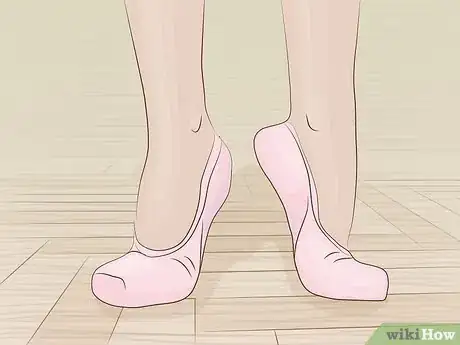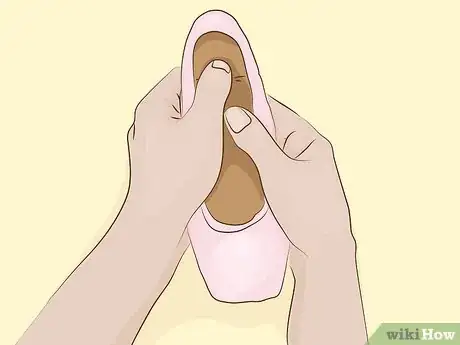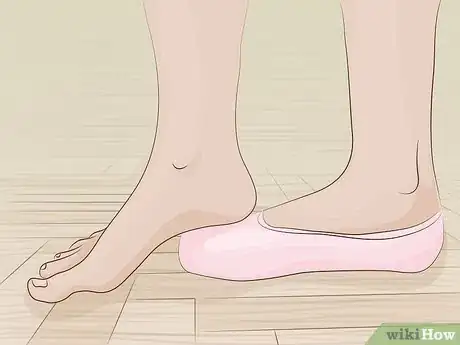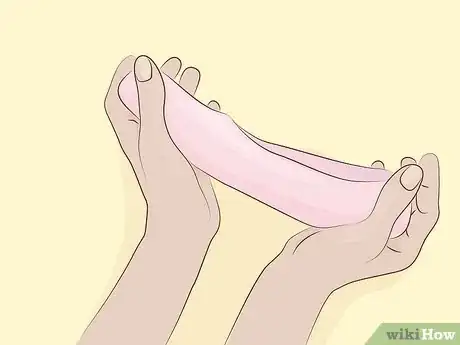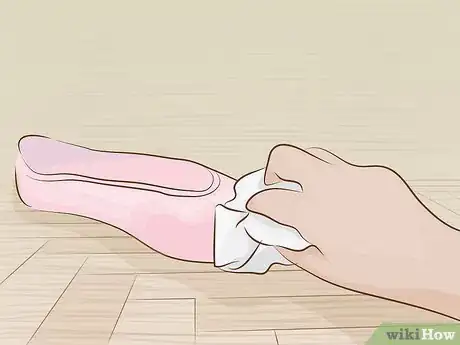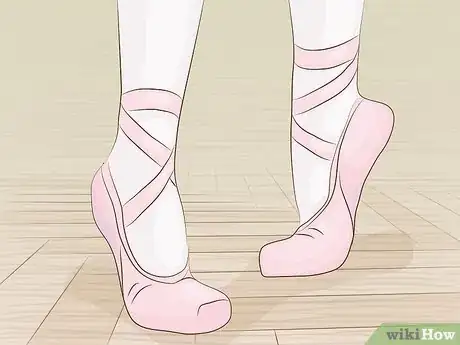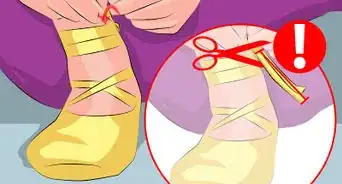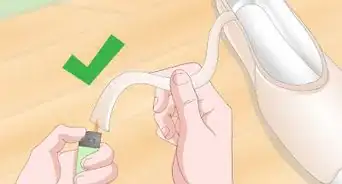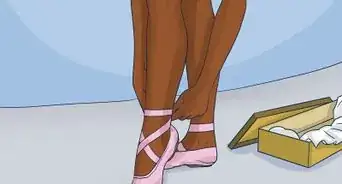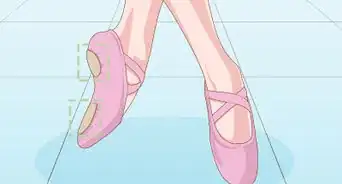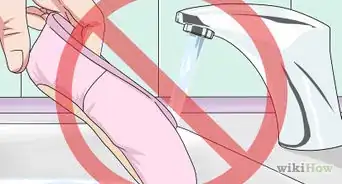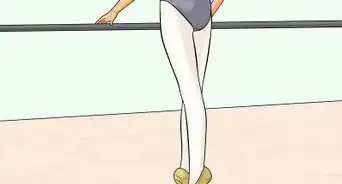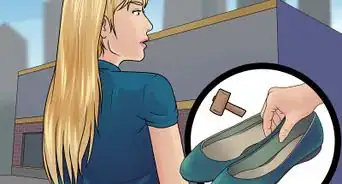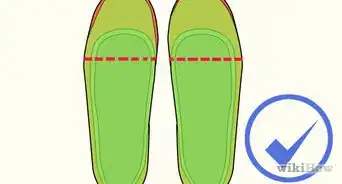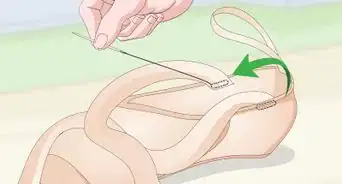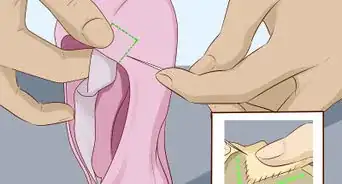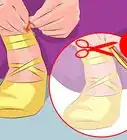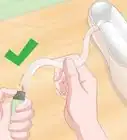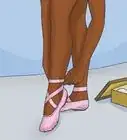This article was co-authored by Geraldine Grace Johns. Geraldine Grace Johns is a Professional Ballerina and the Owner of Grace Ballet in New York and Los Angeles. Geraldine toured through New Zealand, Australia, Japan, and Korea as Jammes in Ken Hill's Original Phantom of the Opera. She has studied with the Royal Academy of Dance in London to become a teacher and taught for the Kudo School of Ballet in Yokohama. Geraldine also ran her own Royal Academy of Dance School in New Zealand before studying at the Neighborhood Playhouse School of the Theatre in New York City. Geraldine was a guest coach and Master Class teacher in Toronto for the Canadian Royal Academy of Dance's Dance Challenge in 2018, 2019, and 2020. She was also a guest coach and Master Class teacher for the USA Royal Academy of Dance Challenge in Long Beach, California in 2019 and 2020. Grace Ballet Los Angeles has won recognition as one of 13 Best Ballet Schools in Los Angeles since opening her school. Geraldine is a contract Practical Teaching Supervisor for the Certificate in Ballet Teaching Studies for the Royal Academy of Dance.
This article has been viewed 130,935 times.
You’ve just dropped a large sum of money to purchase a new pair of pointe shoes, and you’ll want to break them in to get the most comfortable use out of them. By breaking in your pointe shoes, you're actually making the shoes mold to the shape of your feet! Once you mold your pointe shoes to your foot you can continue to break in the shoe using barre exercises. This will ensure that your shoes have a long life span ahead of them.
Steps
Molding the Shoe
-
1Identify the natural break in your arch. Before you can soften the shank, the reinforced sole of the pointe shoe, you’ll need to figure out where your natural arch breaks. The break is where the heel becomes the arch. Bend your foot to see where your arch naturally breaks. You can mark the point on both your foot and the shoe with a marker.
- Avoid arbitrarily bending the shank of your pointe shoe, since this may not correspond to the natural break in your arch.
-
2Bend the shank at the natural break in your arch. After you’ve identified your natural break and marked it in your shoe, pry up the shank and bend it back and forth gently at the marked position. This will make the shank more pliable when you rise up on pointe.
- Remove the small nail that fastens the shank to your shoe.
Advertisement -
3Wear the shoe to mold the break. Put on the shoe and extend your foot from flat to demi pointe to begin molding the break. This will help you know the exact shape of your foot in your shoe.
-
4Mold the shoe with your hands. Remove the shoe and gently mold the area of the shank where your natural arch breaks. Work the area with your hands, following your mark and the shape your foot has made. Molding the shoe where your arch naturally breaks will make rising in your shoes more comfortable and increase the life of your shoes.
- You don’t need to add heat to help with shaping the shank. Since you previously wore your shoe to begin molding the break, the heat from your foot will have been enough.[1]
- There’s no designated left or right ballet shoe- your own feet will determine this as they break in the shoe. Label each shoe to make sure you’re consistently putting on your shoes until they are broken in enough to identify by sight.[2]
Softening the Box
-
1Step on the box. To soften the platform at the front of the shoe that supports the toes, gently step on it with the heel of your foot. Softening the box will increase the comfort of wearing pointe shoes.
- While some professionals slam the box in a doorway, steer clear from this method. Softening it this way could break the box (or your fingers!) if not done correctly.[3]
-
2Massage the toe box gently. Using your hands, massage the sides of the toe box to soften it. This will make the box more supple, allowing for a more comfortable dancing experience.[4]
-
3
Dancing in Your Shoes
-
1Walk on demi pointe. After you have sewn the elastic and ribbons on your shoes, you can begin exercises to further break in your new pointe shoes. Rise onto demi pointe and walk around.
- Make sure you always use your pointe shoes on a proper studio floor so the shoes will last longer.
- Take a break from walking around on demi pointe and occasionally arch your foot.[7]
-
2Do roll-throughs. Standing in first position bend one knee and rise to full pointe on your foot. Repeat this with both feet, rolling slowly back down.[8]
-
3Work at the barre. Heat and perspiration from your foot will continue to aid molding your shoe to your foot as you work at the barre. You can do plies or pony trots, making sure to work both feet equally.
Expert Q&A
Did you know you can get expert answers for this article?
Unlock expert answers by supporting wikiHow
-
QuestionIs it hard to dance in pointe shoes?
 Geraldine Grace JohnsGeraldine Grace Johns is a Professional Ballerina and the Owner of Grace Ballet in New York and Los Angeles. Geraldine toured through New Zealand, Australia, Japan, and Korea as Jammes in Ken Hill's Original Phantom of the Opera. She has studied with the Royal Academy of Dance in London to become a teacher and taught for the Kudo School of Ballet in Yokohama. Geraldine also ran her own Royal Academy of Dance School in New Zealand before studying at the Neighborhood Playhouse School of the Theatre in New York City. Geraldine was a guest coach and Master Class teacher in Toronto for the Canadian Royal Academy of Dance's Dance Challenge in 2018, 2019, and 2020. She was also a guest coach and Master Class teacher for the USA Royal Academy of Dance Challenge in Long Beach, California in 2019 and 2020. Grace Ballet Los Angeles has won recognition as one of 13 Best Ballet Schools in Los Angeles since opening her school. Geraldine is a contract Practical Teaching Supervisor for the Certificate in Ballet Teaching Studies for the Royal Academy of Dance.
Geraldine Grace JohnsGeraldine Grace Johns is a Professional Ballerina and the Owner of Grace Ballet in New York and Los Angeles. Geraldine toured through New Zealand, Australia, Japan, and Korea as Jammes in Ken Hill's Original Phantom of the Opera. She has studied with the Royal Academy of Dance in London to become a teacher and taught for the Kudo School of Ballet in Yokohama. Geraldine also ran her own Royal Academy of Dance School in New Zealand before studying at the Neighborhood Playhouse School of the Theatre in New York City. Geraldine was a guest coach and Master Class teacher in Toronto for the Canadian Royal Academy of Dance's Dance Challenge in 2018, 2019, and 2020. She was also a guest coach and Master Class teacher for the USA Royal Academy of Dance Challenge in Long Beach, California in 2019 and 2020. Grace Ballet Los Angeles has won recognition as one of 13 Best Ballet Schools in Los Angeles since opening her school. Geraldine is a contract Practical Teaching Supervisor for the Certificate in Ballet Teaching Studies for the Royal Academy of Dance.
Professional Ballerina & Ballet Instructor
-
QuestionHow do I sew the ribbons and elastic onto the pointe shoe?
 Community AnswerFirst, bend down the heel of the pointe shoe to where it meets the sockliner. Then mark the crease on the inside of the shoe with a pencil so you know where to attach the ribbon. Then sew the ribbon onto each side of the shoe with a heavy thread making sure that it overlaps with at least one inch of the shoe. Most dancers sew the elastic in a place where the ribbons will conceal it.
Community AnswerFirst, bend down the heel of the pointe shoe to where it meets the sockliner. Then mark the crease on the inside of the shoe with a pencil so you know where to attach the ribbon. Then sew the ribbon onto each side of the shoe with a heavy thread making sure that it overlaps with at least one inch of the shoe. Most dancers sew the elastic in a place where the ribbons will conceal it. -
QuestionHow long does it take to break in new pointe shoes?
 Community AnswerFor beginners, it can be about a month. It depends on how much your feet are working and how much you dance in them.
Community AnswerFor beginners, it can be about a month. It depends on how much your feet are working and how much you dance in them.
Warnings
- Before you break in your shoes show them to your teacher and make sure he or she approves.⧼thumbs_response⧽
- Make sure you properly clean your feet, your shoes, and cover blisters to avoid foot infections or ingrown toenails.[10]⧼thumbs_response⧽
References
- ↑ http://www.danceinforma.com/2015/08/01/8-ways-make-pointe-pain-free/
- ↑ http://www.theballetbag.com/2009/12/28/dancing-shoes/
- ↑ http://www.balletforadults.com/how-to-break-in-pointe-shoes/
- ↑ https://www.thoughtco.com/breaking-in-pointe-shoes-1006582
- ↑ https://www.thoughtco.com/breaking-in-pointe-shoes-1006582
- ↑ http://www.balletforadults.com/how-to-break-in-pointe-shoes/
- ↑ http://www.balletforadults.com/how-to-break-in-pointe-shoes/
- ↑ https://www.thoughtco.com/break-in-new-pointe-shoes-1006738
- ↑ https://dancer.com/about-gaynor-minden/about-our-shoes/faq/


